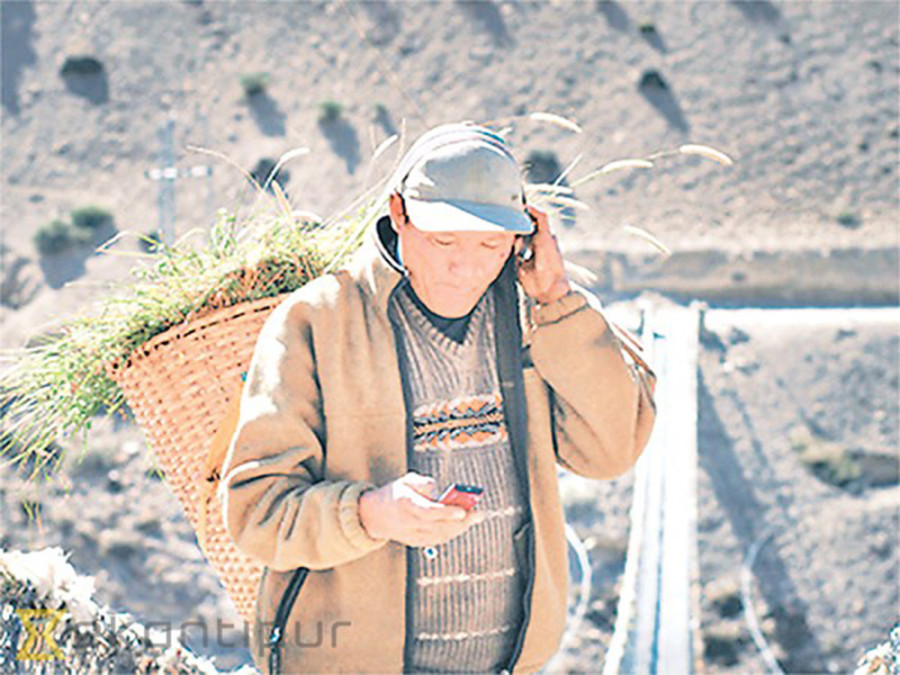Opinion
Agriculture and technology
ICT can deliver useful information to farmers to mitigate the risks inherent to farming
Anoj Chhetri
Information and Communication Technology (ICT) in agriculture is an emerging field that encompasses any communication device or application, including radio, television, cellular phones, etc., to enhance agricultural development.
The last man
In the early part of the last century, Mahatma Gandhi proposed a simple test for the effectiveness of any development activity: Find out how the last man would be affected by it. We should adopt this as a test for ICT in agricultural development: How will the last farmers be reached, touched and transformed by these marvellous modern communication tools?
ICT is rapidly expanding in the agriculture sector and provides information needed for farm production. An example of ICT in agriculture is registration of individual animals in the information grid. In order to reap the opportunities it offers, we should apply it in the creation, diffusion and use of knowledge, which should form the basis of a sustained growth strategy. However, so far there is no single social, political, and economic model that has been the most successful in harnessing ICT in agriculture.
In the last decade, ‘agricultural software’ has matured into an ICT dominated market-pull situation characterised by electronic data interchange, knowledge-based networking and dedicated ICT production systems. During this process, marked differences were found in software attributes, identified end-user needs and applications. ICT adoption in the agricultural sector itself is proving to be a non-structured process—currently integrating remote sensing, Geographic Information System (GIS), knowledge systems, robotics, process control and information dissemination—within each country’s ICT policies.
Increasing the efficiency, productivity and sustainability of small-scale farms is an area where ICT can make a significant contribution. Farming involves risks and uncertainties due to poor soils, drought, erosion and pests. ICT can deliver useful information to farmers on crop care and animal husbandry, fertilisers and feedstock inputs, pest control, seed sourcing and market prices.
Increased GDP
Global studies demonstrate that ICT in agriculture affect economic growth and productivity of inputs positively. Several studies conducted in developing countries show that only one-fifth of the farmers were highly aware about the role of ICT in agriculture. The initial response of the farmers seems positive and encouraging since ICT in agriculture is a new initiative in the extension work. It was found that the farmers using ICT have increased their farm productivity (rice production) by almost six percent than in the previous year, while farmers without exposure to ICT have also increased productivity by about four percent. It can apparently be assumed that ICT alone can contribute to a two percent increase of farm productivity. Awareness of farmers—level of education, exposure to training, etc.—was also found to have a positive correlation with the benefits they derive from using ICT in agriculture. Farmers mostly prefer traditional sources such as radio and television which continue to be the most common ICTs in rural households in many parts of the world. Given the strong presence of the traditional ICTs in rural areas, many projects have been designed to combine both traditional and advanced ICTs, thereby maximising the number of potential users.
For example, many projects combine Internet use, information gathering based on digital sensors and geo-referencing, contact with key informants, and diffusion via radio or cell phones.
In Nepal, the agriculture sector still requires utilisation and deployment of ICT for improvement in production and marketing of crops. A study I conducted suggests that ICT is an important resource for improving labour productivity, resulting in economic and social changes. Specifically, it holds untapped potential for agricultural development in least developed countries such as Nepal. The field study reveals that the poultry sector, a major source of income, has not developed adequately due to low level of ICT penetration and socio-economic barriers for ICT adoption at the grassroots level.
Further, it suggests that 41 percent of farmers are potentially ready to reap benefits of emerging ICT tools if there is adequate support from the government and service providers. ICT contributes about five percent and 24 percent improvement in the agriculture and poultry sectors respectively, thereby holding a huge potential to increase their contribution to the Gross Domestic Product (GDP).
There is therefore ample potential for the effective use of ICT in agriculture, and ongoing initiatives are promising. However, much still remains to be done. Some important measures are better communication, increased web-based storage of agricultural information, cheaper and improved connectivity for rural communities, greater recognition by the government of the importance of ICT in agriculture and more tailor-made, quality agricultural information services.
Chhetri is Deputy Managing Director at the South Asia School of Rural Reconstruction, Kathmandu




 17.12°C Kathmandu
17.12°C Kathmandu











